Can Dogs Eat Raw Beef Fat?
Yes, dogs can technically eat raw beef fat, but it’s not recommended. This type of fat is very rich and can cause stomach upset or more serious conditions like pancreatitis. It also carries a risk of harmful bacteria. Always consult with your veterinarian before giving your dog new foods.
What is Raw Beef Fat?
Raw beef fat, often referred to as suet or tallow when rendered, is a concentrated source of energy for dogs that contains a mix of saturated and unsaturated fatty acids. These fats are essential for various bodily functions, including cell structure maintenance, hormone production, and energy provision.

Nutritional Content of Raw Beef Fat:
- Saturated fats: Vital for protecting internal organs and providing energy.
- Unsaturated fats are essential for skin and coat health and inflammatory responses.
- Vitamins A, D, E, and K: Support immune health, vision, and blood clotting.
- Omega-3 and Omega-6 fatty acids: Promote healthy skin and coat and aid in brain function.
Incorporating raw beef fat into your dog’s diet should be done with caution. Despite its benefits, there are risks, such as potential bacterial contamination and the possibility of digestive upset, especially in dogs not accustomed to rich fatty foods. It’s crucial to source high-quality beef fat from reputable suppliers and handle it with proper hygiene to minimize these risks.
Table 1: Fatty Acid Composition in Raw Beef Fat
| Fatty Acid | Type | Percentage (%) | Benefits |
|---|---|---|---|
| Palmitic acid (16:0) | Saturated | 20-30 | Provides energy, supports cellular functions |
| Stearic acid (18:0) | Saturated | 10-20 | Essential fatty acid supports brain function, reduces inflammation |
| Oleic acid (18:1) | Monounsaturated | 40-50 | Antimicrobial properties support skin health |
| Palmitoleic acid (16:1) | Monounsaturated | 2-6 | The neutral effect on cholesterol levels supports cellular structure |
| Linoleic acid (18:2) | Polyunsaturated | 2-4 | Essential fatty acid, supports brain function, reduces inflammation |
| Linolenic acid (18:3) | Polyunsaturated | 0.5-1.5 | Essential fatty acid, supports heart health, anti-inflammatory properties |
| Arachidonic acid (20:4) | Polyunsaturated | 0.2-0.5 | Supports muscle growth, involved in inflammatory response and immune function |
The Benefits of Raw Beef Fat on Dogs
Feeding your dog raw beef fat, along with other organ meats like beef kidneys, can seem like a natural choice, especially with the growing popularity of raw pet diets. However, like any dietary decision, it comes with benefits and potential risks that every dog owner should consider.
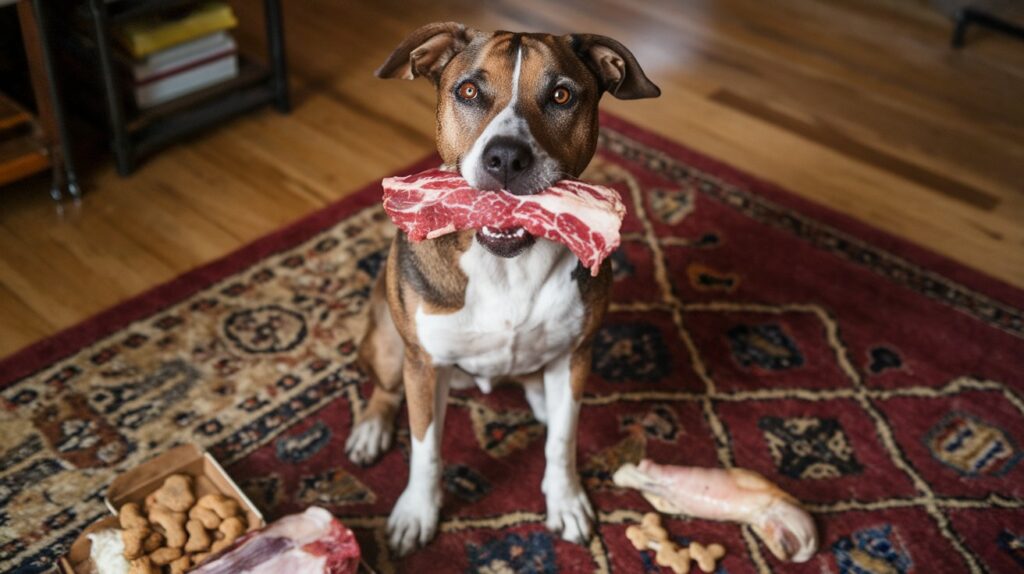
Benefits of Raw Beef Fat:
- Skin and Coat Health: Raw beef fat is rich in essential fatty acids, which can dramatically improve the shine and overall condition of your dog’s coat.
- Increased Energy: Fats are a dense source of energy. Raw beef fat can help boost your dog’s energy levels, which is particularly beneficial for active or working dogs.
- Enhanced Digestion: Unlike many processed foods, raw fats can be easier for dogs to digest, assuming they are introduced correctly into their diets.
Table: Nutritional Benefits of Raw Beef Fat
| Nutrient | Benefits |
|---|---|
| Omega-3 Fatty Acids | Supports skin, coat, and joints |
| Saturated Fats | Provides concentrated energy |
| Vitamins A and D | Boosts immune health and vision |

Potential Risks:
However, not all dogs respond well to high-fat diets. Here are some risks associated with feeding raw beef fat:
- Pancreatitis: High-fat foods can lead to pancreatitis, a severe inflammatory condition of the pancreas that can be life-threatening.
- Obesity: Excessive fat intake can also contribute to weight gain and obesity, especially in less active dogs.
- Allergies: Some dogs might be allergic to beef or specific components in raw fats, which can manifest as skin irritations or gastrointestinal upset.
Precautions:
- Moderation is Key: Always start with small amounts to gauge your dog’s tolerance.
- Quality Matters: Source your beef fat from reputable suppliers to minimize the risk of contamination.
- Veterinary Guidance: Consult with your vet before significantly changing your dog’s diet, especially if your dog has pre-existing health conditions.
You can make a more informed decision about incorporating raw beef fat into your dog’s diet. Always ensure that you’re monitoring your pet’s reaction to their new diet and adjust accordingly. For more detailed guidance and the latest research, visit ASPC A’s guide on pet raw diets.
Feeding your dog raw beef fat, along with other organ meats like beef kidneys and even raw chicken bones or chicken drumsticks, can seem like a natural choice, especially with the growing popularity of raw pet diets. However, like any dietary decision, it comes with benefits and potential risks that every dog owner should carefully consider.
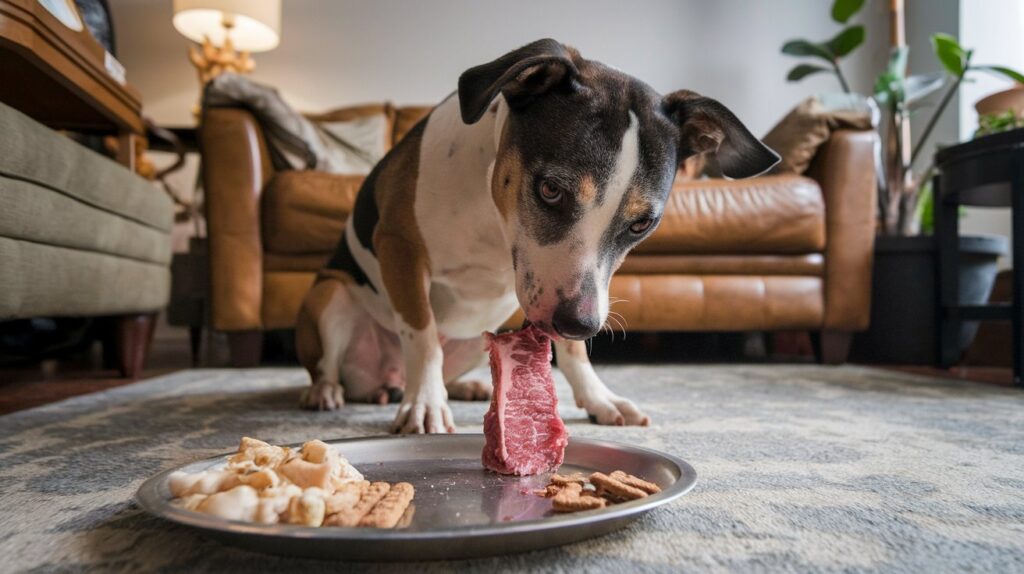
Feeding Raw Beef Fat to Your Dog
Introduction of Raw Beef Fat:
- Start Small: Slowly introduce raw beef fat into your dog’s diet. Begin with small quantities and observe how your dog reacts. Learn about adjusting your dog’s diet and monitoring its health during dietary changes.
- Gradual Increase: You can gradually increase the portion if your dog tolerates the initial small amounts well. However, raw beef should not exceed 10% of your dog’s food intake, as excessive fat can lead to severe and painful pancreatitis.

Here is a simple table to guide how much raw beef fat you can safely introduce to your dog’s dogs based on their weight:
| Dog’s Dog’st (lbs) | Starting Amount (grams) | Maximum Amount (grams) |
|---|---|---|
| 10 | 5 | 10 |
| 20 | 10 | 20 |
| 50 | 25 | 50 |
| 100 | 50 | 100 |
Handling and Storage:
- Safe Handling: Always handle raw beef fat cleanly to avoid contamination. Use separate utensils and chopping boards for raw meat and other foods.
- Proper Storage: Store raw beef fat in the refrigerator or freezer. If refrigerated, it should be used within a couple of days to maintain freshness. When freezing for extended periods, take care to prevent freezer-burned meat, as this can negatively impact both the taste and nutritional value. Always ensure the fat is thoroughly thawed before feeding it to your dog to avoid any digestive issues.
Health Considerations for Dogs Eating Raw Beef Fat
Feeding your dog raw beef fat may seem natural, mainly if you aim for a diet that mimics its ancestral carnivorous patterns. However, it’s crucial to approach this with caution and informed preparation to ensure your furry friend’s health and vitality.
Allergic Reactions and Sensitivities:
Like humans, some dogs might be allergic or sensitive to certain foods, including raw beef fat or even seasonings like spices and salts such as Tajín seasoning, which should never be added to their meals. Start with a small amount of raw fat and closely observe your pet for signs of discomfort or allergic reactions such as itching, gastrointestinal upset, or lethargy. If you notice any adverse effects, it’s essential to adjust your diet accordingly and consult with your vet.

Risk of Pancreatitis and Obesity:
Raw beef fat is high in calories and can be rich in saturated fats. While a moderate amount can be beneficial, too much fat can increase the risk of pancreatitis and obesity. Both conditions are severe and can lead to further health complications. Therefore, balancing your dog’s diet with lean meats and healthy fats is essential, ensuring they don’t consume too much raw beef fat.

Here’s a quick reference table to help you manage the inclusion of raw beef fat in your dog’s diet:
| Condition | Suggestion |
|---|---|
| Initial Testing | Start with small amounts, observe reactions |
| Diet Balance | Ensure a balanced diet with lean proteins |
| Health Monitoring | Regular vet visits for optimal health |
Alternatives to Raw Beef Fat for Dogs
When considering your dog’s dietary fats, raw beef fat might be a traditional option. However, due to potential health risks such as pancreatitis or foodborne illness, exploring safer alternatives could benefit your furry friend’s overall health and diet.
Healthy Animal Fat Alternatives:
Chicken or Pork Fat: These fats are generally more accessible in the digestive system than beef fat. They are rich in essential fatty acids and can be introduced in controlled amounts. When choosing chicken or pork fat, ensure it’s cooked to avoid the risk of bacterial infections, which can be familiar with raw fats.

Plant-Based Fat Options:
Coconut Oil: Known for its myriad of health benefits, coconut oil is a great plant-based fat for dogs. It can help improve their coat and skin health and boost energy. However, starting with small amounts is crucial to assess your dog’s tolerance, as too much can cause diarrhoea or weight gain.

Here’s a quick reference table to help you transition to these alternatives safely:
| Fat Type | Benefits | Recommended Starting Amount |
|---|---|---|
| Chicken or Pork | Easier digestion, less allergic risks | 1 teaspoon per 10 pounds of body weight |
| Coconut Oil | Improves coat and skin, boosts energy | 1/4 teaspoon per 10 pounds of body weight |
Raw beef fat provides certain nutritional benefits, but the associated risks may outweigh these, particularly if your dog has a sensitive stomach or other health concerns. Consider chicken or pork fat as more digestible alternatives or plant-based options like coconut oil to boost healthful fats.
Responsible Feeding Practices
Moderation is Crucial: Feeding your dog raw beef fat should always be done in moderation. While it’s a good source of energy, too much fat can lead to obesity or more severe health issues like pancreatitis. Balancing their intake with their overall diet and activity level is essential to maintain a healthy weight.
Consult a Veterinarian: Every dog is unique, and what works for one might not suit another. Consulting with a veterinarian is crucial to tailoring a diet that supports your dog’s specific health needs, age, and activity level. A professional can guide you on how much raw beef fat is safe for your dog to consume based on its health.
Regular Health Monitoring: Monitor your dog’s health and weight to catch potential problems early. Regular check-ups with your vet and watching for signs of weight gain or digestive issues can help you adjust your diet more effectively and prevent health complications.
Here’s a brief overview of what to keep in mind when incorporating raw beef fat into your dog’s diet:
| Aspect | Recommendation |
|---|---|
| Amount of Fat | Limit raw beef fat to a small percentage of daily intake |
| Health Monitoring | Regular vet visits and weight checks |
| Diet Adjustment | Adjust based on activity level and health cues |

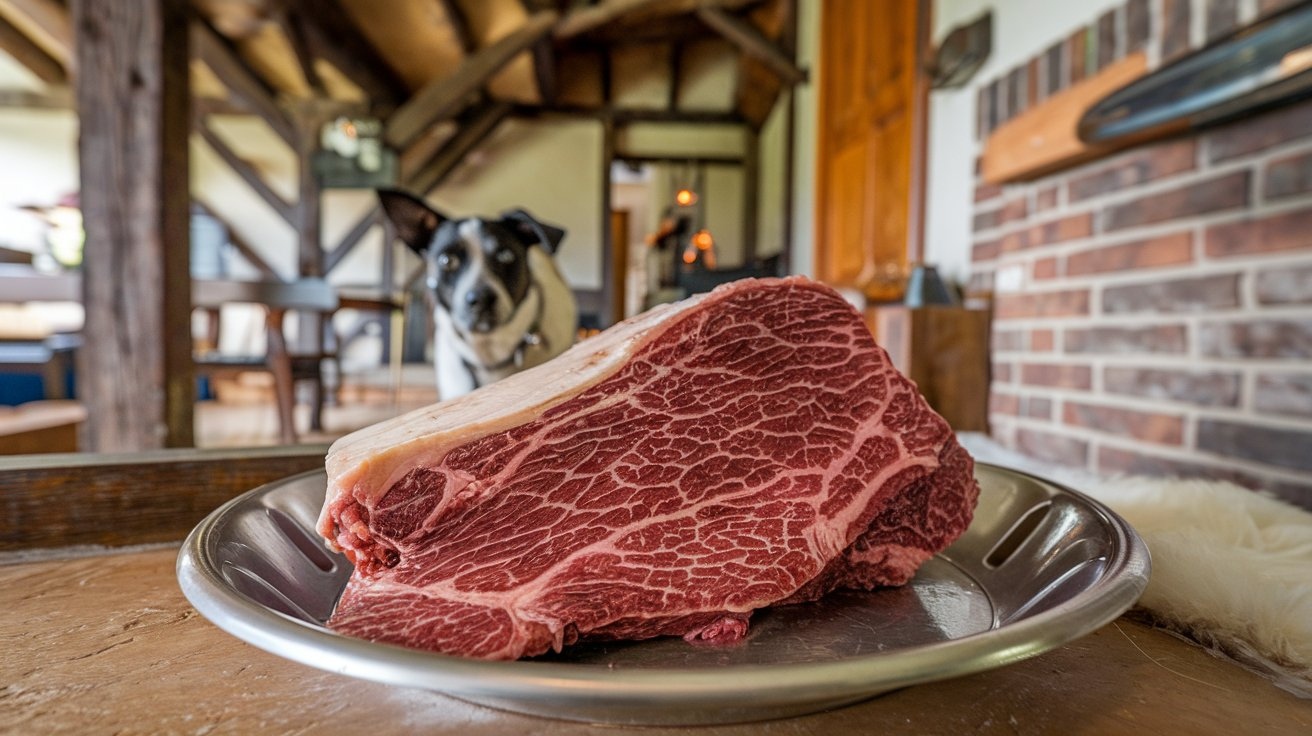
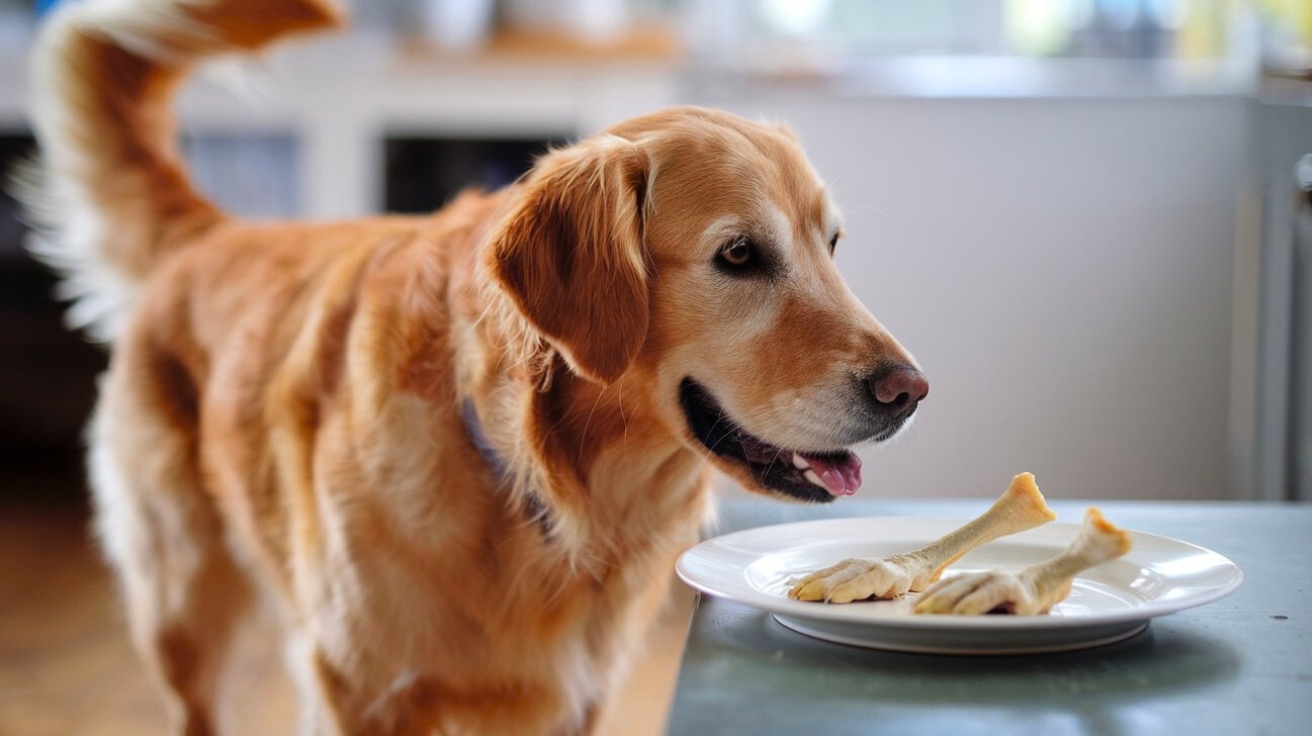

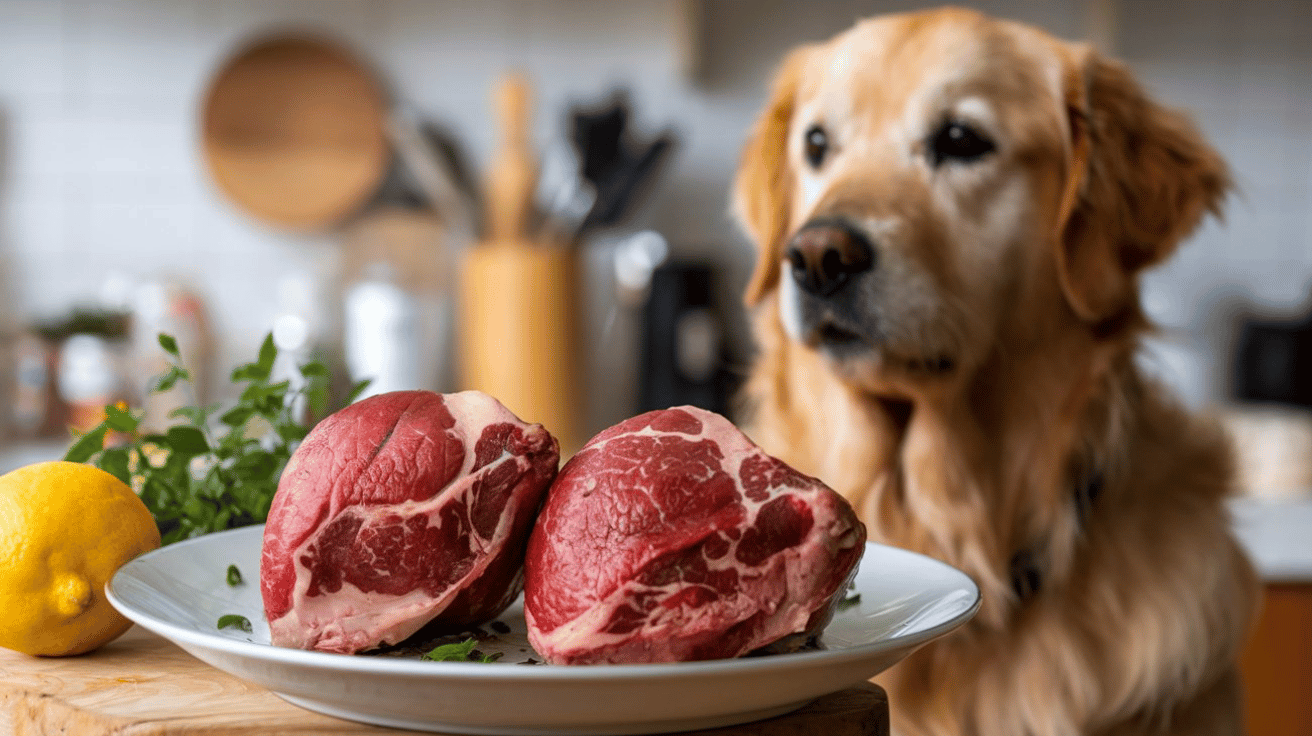

One thought on “Can Dogs Eat Raw Beef Fat? Benefits, Risks, and Advice”